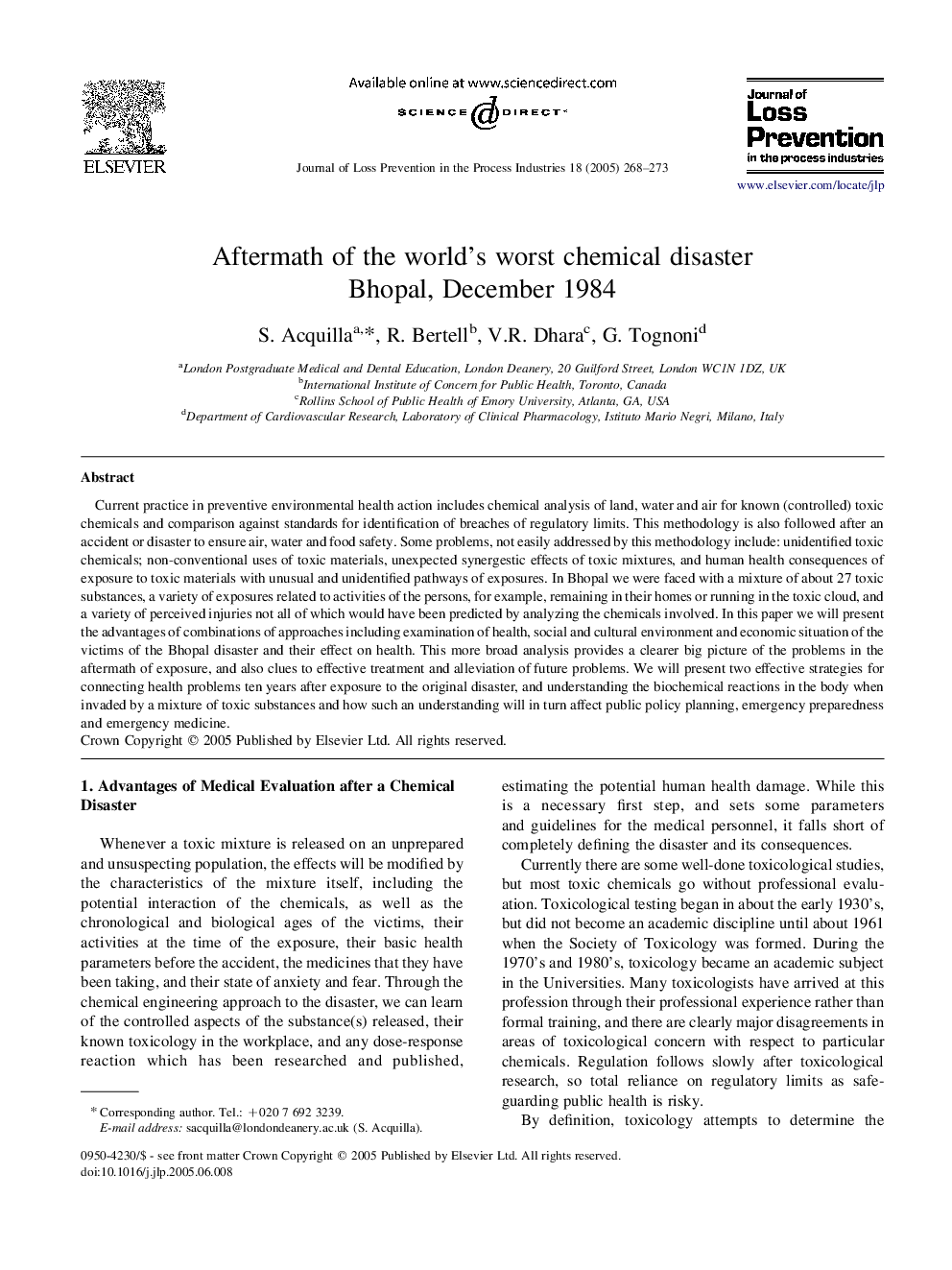| Article ID | Journal | Published Year | Pages | File Type |
|---|---|---|---|---|
| 9675106 | Journal of Loss Prevention in the Process Industries | 2005 | 6 Pages |
Abstract
Current practice in preventive environmental health action includes chemical analysis of land, water and air for known (controlled) toxic chemicals and comparison against standards for identification of breaches of regulatory limits. This methodology is also followed after an accident or disaster to ensure air, water and food safety. Some problems, not easily addressed by this methodology include: unidentified toxic chemicals; non-conventional uses of toxic materials, unexpected synergestic effects of toxic mixtures, and human health consequences of exposure to toxic materials with unusual and unidentified pathways of exposures. In Bhopal we were faced with a mixture of about 27 toxic substances, a variety of exposures related to activities of the persons, for example, remaining in their homes or running in the toxic cloud, and a variety of perceived injuries not all of which would have been predicted by analyzing the chemicals involved. In this paper we will present the advantages of combinations of approaches including examination of health, social and cultural environment and economic situation of the victims of the Bhopal disaster and their effect on health. This more broad analysis provides a clearer big picture of the problems in the aftermath of exposure, and also clues to effective treatment and alleviation of future problems. We will present two effective strategies for connecting health problems ten years after exposure to the original disaster, and understanding the biochemical reactions in the body when invaded by a mixture of toxic substances and how such an understanding will in turn affect public policy planning, emergency preparedness and emergency medicine.
Related Topics
Physical Sciences and Engineering
Chemical Engineering
Chemical Health and Safety
Authors
S. Acquilla, R. Bertell, V.R. Dhara, G. Tognoni,
